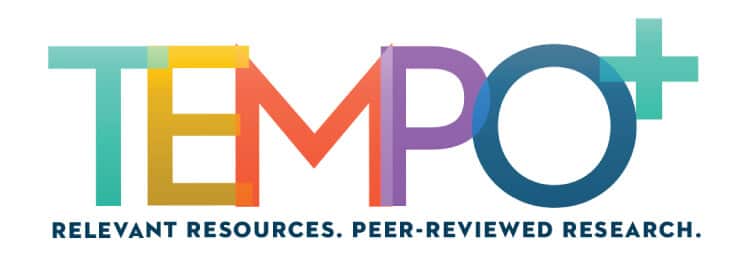Ask any parent or educator of a gifted child to describe what it means to be gifted, and you’ll get a large variety of answers. Words like tenacious, bright, and thoughtful come to mind, alongside perfectionistic and rigid. Perhaps the best way to describe gifted individuals is intense, concerning both their cognitive prowess and their emotional development.
The intensity that commonly defines giftedness refers to how a gifted person approaches his or her life. At its best, most-developed attribute, the intensity is the passion that drives people to achieve and produce amazing feats in any domain, a modern superpower. At its most immature state, the intensity is the turmoil that often consumes gifted people, creating many of the self-defeating behaviors they exhibit (Fonseca, 2015a; Sword, 2005). The more negative aspects of intensity are often witnessed in our gifted children as they learn how to manage this aspect of their personality.
Intensity can impact a variety of areas of a person’s life, from the way one approaches problem solving and cognitive reasoning to the depth of emotions he or she exhibits. Cognitive intensity, those aspects of thinking and processing information, relates to the attributes of focus, sustained attention, creative problem solving, and advanced reasoning skills many gifted individuals exhibit (Hébert, 2011). Most people consider cognitive intensity a primary feature of giftedness and equate it to “being smart”—a positive thing.
Intensity has another side. Just as gifted individuals display intense patterns of thinking, they also display intense emotions. Emotional intensity refers to the passion gifted people feel on a daily basis—the way they interact with the world. It also relates to the extreme highs and lows many gifted individuals experience throughout their lifetime, causing them to question their mental sanity (Fonseca, 2015a; Sword, 2002). This type of intensity is often the most problematic for gifted children and the parents and educators who work with them. The attributes of emotional intensity can result in a range of behavioral outbursts that are internal (e.g., moodiness, anxiety, depression) or external (e.g., tantrums, verbal aggression, physical aggression).
Helping gifted children to harness the power of emotional intensity in its most productive and mature state requires both an understanding of the specific attributes and the problems that can manifest, as well as the specific interventions that can support the healthy development of each domain. The following sections outline some of the typical attributes of emotional intensity, the potential problems that can manifest, and targeted interventions for parents and educators that can positively impact the development of emotional intensity in our gifted youth (Daniels & Piechowski, 2008).
Extreme Emotions
Perhaps the most frequently noted attribute of emotional intensity are the extreme emotions sometimes demonstrated by the gifted individual. Emotional swings between positive (very happy) and negative (very sad) happen at an ever-quickening pace, often leaving the child, parent, and educator at a loss to manage the changing emotional landscape (Fonseca, 2015a; Sword, 2002).
The adverse aspects of the emotional range will often include internalized feelings of sadness, stress, and anxiety and externalized feelings of frustration and rage. Furthermore, the mood swings are easily misinterpreted as a mental health condition. Gifted children, especially when they are young, may be viewed as emotionally volatile, with extremely poor emotional self-control. Although this is true, the cause is seldom a mental health disorder (Webb, Gore, Amend, & DeVries, 2007). More often, the source of discomfort is the emotional intensity without the needed coping tools to manage the emotional swings (Sword, 2006).
There are several things parents and educators can do to assist gifted youth as they learn to embrace their emotional intensity and manage the extreme emotions. The list below includes the most high-leverage interventions that can help with this aspect of emotional intensity.
- Teach an emotional vocabulary. Gifted children need to develop a vocabulary to discuss their emotional selves; however, educators and parents often assume this is an organic process, requiring little intervention. The more adults can intentionally teach children about complex emotions, the more a gifted child will be able to discuss and eventually manage his or her behaviors.
- Teach children about their escalation cycles. It is very difficult for people to control something when they lack an awareness of it. This is particularly true with emotional self-regulation. For gifted children to adjust their emotional reactions, they must first become aware of how they respond to their emotions. The more they can understand how their body and mind react to emotional swings, the more they can learn to anticipate and regulate their reactions.
- Understand your own escalation cycle. Gifted kids are adept at pushing a teacher’s or parent’s buttons. Recognizing the catalysts that trigger an adverse reaction will enable others to remain calm during emotional outbursts, no matter how the behavior appears.
Extreme Empathy
Extreme empathy is a typical characteristic of the social-emotional development of gifted youth (Hébert, 2011). Gifted youth not only sympathize with others to a great extent, but they can be easily hurt by others and are highly self-critical if they unintentionally hurt others.
Although empathy is a wonderful attribute, there are some unintended negative outcomes of this aspect of emotional intensity when gifted individuals have not yet matured their skills. Gifted children may overreact to others, allowing the emotional context of situations to trigger their own emotional mood swings (Piechowski, 1997). Furthermore, youth may become entrenched in the emotional lives of their friends, taking on the problems of others and struggling to differentiate their problems from those of their friends. This can leave them emotionally vulnerable and reactive to the natural ebb and flow of friendships and the social contexts of life (Fonseca, 2015a).
Fortunately, there are a few things parents and educators can do to help gifted children harness the positive aspects of empathy.
- Teach children to discern situations. Whether it’s learning to distinguish between a friend’s problem and their own or learning to discern between various stressful situations, gifted children need to master the skill of perception and begin to differentiate their environment. Learning to tell which problems they need to solve and when to believe their internal chatter are both valuable tools gifted children may develop to manage their emotional responses to the world. The more we can help children with this process, the more rapidly they can learn this important skill.
- Normalize emotional intensity. Gifted children are very aware of the negative aspects of emotional intensity and how different this intensity is from the “norm.” But, viewing emotional intensity as a negative trait only makes gifted children react more negatively to life. It is important for the adults to emphasize the positive aspects of emotional intensity. Also, it is important for gifted individuals to recognize that they are intense by nature—that feeling deeply for others is normal for them. Normalization of this aspect of intensity helps make the adverse aspects manageable without triggering additional negative responses.
- Help gifted children develop coping strategies, especially relaxation and mindfulness. Children need to learn coping strategies as a way to manage behavior. This is particularly true with our gifted children. The more they can learn strategies for relaxing, taking a mindful minute in which they acclimate themselves to the moment and become aware of their emotional chatter and internal state, the more they will learn to flow with their intensity instead of fighting against it and increasing the negative response.
Physical Manifestations of Emotional Intensity
Emotional intensity isn’t only about our emotional reactions to events. There is a physical, or biological, aspect to emotional intensity as well. For many gifted individuals, emotional intensity manifests as a collection of biological reactions to stress. Stomachaches, headaches, heart palpitations, and anxiety-like behaviors are all common within emotional intensity (Fonseca, 2015a; Peterson, 2006).
For some of our gifted youth, the physical aspects of emotional intensity can be misinterpreted as an anxiety disorder or panic attack. Although the outward symptoms are similar, the internal origins have less to do with a mental health concern and more to do with the normal aspects of what it means to be gifted. When these symptoms are misdiagnosed, there are often medical treatment responses that can also be inappropriate, resulting in more adverse outcomes (Webb et al., 2007).
It is important for parents and educators to help gifted children understand all aspects of emotional intensity, including some of these common physical reactions, and teach gifted children how to manage their response to emotional intensity. The list below includes some of the most effective interventions that can help to manage physical aspects of emotional intensity.
- Teach and emphasize healthy lifestyle choices. Gifted children need to learn balance at an early age, including how to balance lifestyle choices. Learning to incorporate healthy food, adequate rest, a balance between work and play, and physical outlets or exercise is vital in learning to regulate the physical aspects of emotional intensity. Without this balance, gifted children can experience worsening symptoms of their intensity as sugar and refined carbohydrates contribute to emotional reactions and lack of sleep can increase outward expressions of frustration (Fonseca, 2011).
- Teach mindfulness. Whether using a model of meditation or prayer or a more secular version of mindfulness, it is important that children learn to become fully aware of the moment, as well as aware of internal states. Teaching gifted youth to regularly pause in their busy lives and mentally check in, increasing their awareness of the moment and determining their current state of being, can result in an increased ability to manage their emotional state. The awareness creates the space needed to recognize when they are out of balance and make corrections. It also enables them to learn to manage their physical reactions to things, something defined more in the next tip (Fonseca, 2015b).
- Use biofeedback and similar strategies to manage physical symptoms. As gifted children become more self-aware, they are more able to learn to manage their physical responses to emotional events. Techniques like biofeedback allow children to learn to purposefully control their physiological responses. Neurofeedback trains the brain similarly. Both options can be very helpful as gifted children learn to harness the positive aspects of their emotional intensity and mitigate the more negative aspects of the attributes.
Existential Depression
Self-actualization is one of the more sparsely researched aspects of emotional intensity. That said, there is evidence to support the view that gifted children strive toward self-actualization at an early age (Hébert, 2011). This push toward understanding self and the role of self within the universe can result in feelings of existential depression (Webb et al., 2007) when children have not yet managed their intensities or recognized their feelings about self and their role in the world.
Existential depression can hit at a young age with gifted children, resulting in behaviors that mimic generalized anxiety and panic attacks. The origins, however, are different. Gifted children wrestling with their internal purpose may engage in morbid thought patterns that involve death or dying, asking questions that lead parents and educators to become concerned over potential suicidal ideations (Peterson, 2006; Webb, 2008).
Although it is important that such concerns always be addressed, it is vital that adults understand that such questions may be indicative of the child’s push for self-actualization and the accompanying existential depression, as opposed to greater mental health problems. Dealing with the existential crisis head-on, as well as employing the previously mentioned tips, can greatly help our gifted youth embrace the positive aspects of their internal drive (Fonseca, 2015a).
In addition to the previous tips, here are a few more things educators and parents can do to support gifted children as they begin to discover their passions and role within the world.
- Discover the personal “why.” Sinek’s (2011) quintessential book Start With Why speaks to businesses about embracing the why behind the product or service they offer. The same model can be utilized with gifted children as they begin their journey toward self-actualization. Helping them discover their passions at an early age, connecting the things they are interested in to their global values and beliefs can help them establish their personal why. This can then begin to frame how they interact with the world and give meaning to their internal drive. Adults often enter into these types of conversations way too late with children, if at all. As soon as the gifted child can begin to discuss his or her values and passions, adults should start helping the child discover his or her why.
- Align the child with like-minded peers and adults. It is never too early to find a mentor or establish a tribe. Helping children find other gifted peers with similar interests, as well as adult role models, can help them develop a healthy approach to self-actualization (Cross, 2010; Renzulli, 2012). These relationships can be the foundation required to work through periods of existential depression and manage emotional intensity.
- Engage in open dialogue and safe spaces. The world can be a scary place for our gifted children. This is especially true once a child begins to experience an existential crisis. All too often the crisis is greeted with a silencing or distancing response instead of open communication. Gifted children need someone they can talk to when they are worried about their future. They need guidance to work through their extreme emotions and beliefs, a life coach. The emotional coaching will provide the structure needed for these children as they strengthen the positive aspects of their intensity.
Intensity is not a bad thing in and of itself. Intensity is passion—the kind of passion necessary for creation and innovation; the kind of passion sorely needed on the planet now. Intensity, especially emotional intensity, is not the problem for our gifted youth. Rather, the way in which the child copes with his or her intensity can be a problem. Utilizing some of the strategies above can go a long way to helping both kids and adults embrace the intensity and recognize it for what it is—the superpower every gifted child has at his or her disposal. Welcoming intensity, and helping it develop into this superpower, is the best gift we can give our kids; now and in the future.
References
Cross, T. L. (2010). On the social and emotional lives of gifted children: Issues and factors in their psychological development (2nd ed.). Waco, TX: Prufrock Press.
Daniels, S. & Piechowski, M. M. (2008). Understanding the sensitivity, excitability, and the emotional development of gifted children, adolescents, and adults. Scottsdale, AZ: Great Potential Press.
Fonseca, C. (2011). 101 success secrets for gifted kids: The ultimate handbook. Waco, TX: Prufrock Press.
Fonseca, C. (2015a). Emotional intensity in gifted students: Helping kids cope with explosive feelings. Waco, TX: Prufrock Press.
Fonseca, C. (2015b). Raising the shy child: A parent’s guide to social anxiety. Waco, TX: Prufrock Press.
Hébert, T. P. (2011). Understanding the social and emotional lives of gifted students. Waco, TX: Prufrock Press.
Peterson, J. (2006). Addressing the counseling needs of gifted students. Professional School Counseling. 10(1), 43–51.
Piechowski, M. M. (1997). Emotional giftedness: An expanded view. APEX: The New Zealand Journal of Gifted Education, 10, 37–47.
Renzulli, J. S. (2012). Reexamining the role of gifted education and talent development for the 21st century: A four-part theoretical approach. Gifted Child Quarterly, 56, 150–159. Retrieved from http://scottbarrykaufman.com/wp-content/uploads/2012/06/GCQ-article-Reexamining-Role-of-Gifted-Ed-and-Talent-Dev1.pdf
Sinek, S. (2011). Start with why: How great leaders inspire everyone to take action. New York, NY: Portfolio.
Sword, L. (2002). Gifted children: Emotionally immature or emotionally intense. Retrieved from positivedisintegration.com.
Sword, L. (2005). Emotional intensity in gifted children. Retrieved from www.sengifted.org.
Sword, L. (2006). Parenting emotionally intense gifted children. Retrieved from http://talentdevelop.com/articles/ParentingEIGC.html
Webb, J. T., Gore, J. L., Amend, E. R., & DeVries, A. R. (2007). A parent’s guide to gifted children. Scottsdale, AZ: Great Potential Press.
Webb, J. T. (2008). Dabrowski’s theory and existential depression in gifted children and adults. Retrieved from http://www.davidsongifted.org/Search-Database/entry/A10554
Trained as a school psychologist, Christine Fonseca is an award-winning author, national speaker, life coach, and educational consultant. She brings more than 20 years of experience working with students and parents to her many articles and books. Christine has written self-help articles for Parents.com, Johnson & Johnson, Bop/Tiger Beat, and Justine Magazine. Critically acclaimed titles include Emotional Intensity in Gifted Students: Helping Kids Cope With Explosive Feelings, Raising the Shy Child: A Parent’s Guide to Social Anxiety, and I’m Not Just Gifted: Social-Emotional Curriculum for Guiding Gifted Children.


![Emotionally_Intense[1] Emotionally_Intense[1]](https://tempo.txgifted.org/wp-content/uploads/elementor/thumbs/Emotionally_Intense1-rdzy4wa60ry9l1tsokbeu6d8mz4e13oofmy4bjjo9k.jpg)



